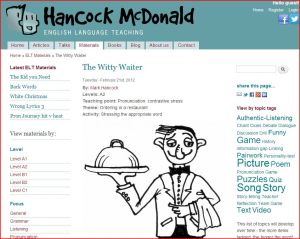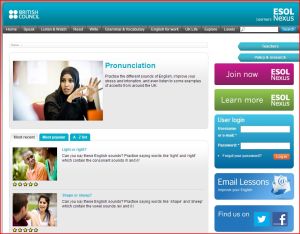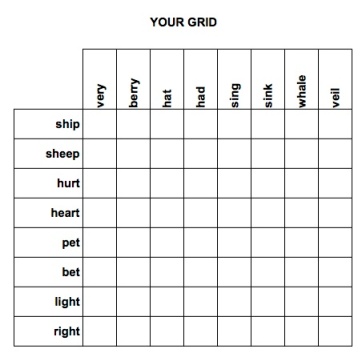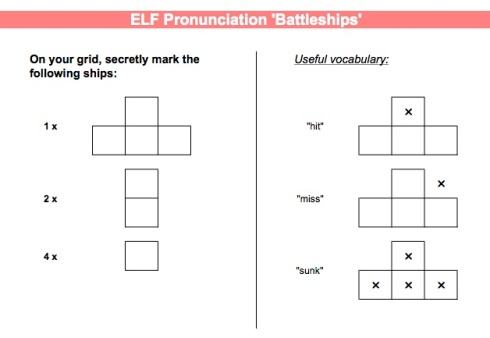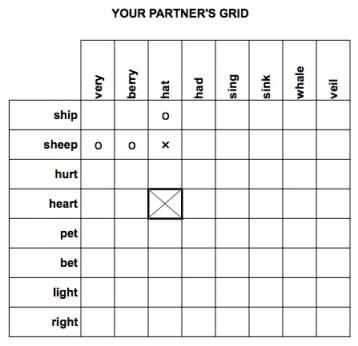This is the second in a series of three posts looking at areas of pronunciation which we’ve found ourselves working on time and again with different classes. If you read our previous post, you may want to skip this introduction and just look at the list of activities bullet-pointed below.
ELF priorities
It can be hard to know what to focus on when it comes to pronunciation, especially if you have a group for a short time or there’s a wide range of needs. One of the great things about adopting an ELF approach is that a clear set of priorities has already been identified, based on research about what’s most likely to cause communication breakdown. This research was used by Jennifer Jenkins to draw up the Lingua Franca Core (LFC), which you can learn more about here. Obviously the key features she identifies might not be problematic for all learners, and the only way to know what will benefit your students is to do a needs analysis. That said, there are three main areas which we’ve found ourselves coming back to again and again in our classrooms:
1) Minimal pairs (e.g. pin / bin, or ship / sheep. Obviously the specific minimal pair depends on the students’ needs.)
2) Nuclear stress (e.g. “Shall we go CYcling at the weekend?” as opposed to, say, going shopping)
3) Communication strategies (e.g. trying to explain what you mean in another way, bypassing problematic vocabulary, or asking your interlocutor to explain what something means). This is relevant to pronunciation in the sense that if learners are aware that it is their pronunciation of a particular word (or their interlocutor’s pronunciation) that is causing communication breakdown, then they need strategies to move the conversation forward.
As part of a workshop on ELF pronunciation, I asked the lovely teachers on Bell’s Delta course to brainstorm classroom activities for these areas. We’ve typed up their ideas and added a few suggestions of our own, which we’re sharing in three posts. This second one looks at ideas for working on…
Nuclear stress
- Walking dictation: learners listen to the teacher reading a sentence and take small steps for words which are not prominent, and a big step when they hear the word carrying the nuclear stress.
- Gesture dictation: similar to walking dictation, but using hands. Learners move their hands apart only a little for words which are not prominent and move their hands apart wide when they hear the word carrying the nuclear stress.
- Cuisenaire rod dictations: similar again to the two ideas above, but learners use short and long rods (see here for more on cuisenaire rods, beyond pronunciation).
- Learners are each a word in the sentence. They listen to the teacher reading the sentence and the student who has the word carrying the nuclear stress jumps / stands up when they hear their word.
- Delete words which could sensibly carry the nuclear stress from all the sentences in a dialogue, but just leave stress bubbles showing which syllable should be stressed (e.g. if you deleted cycling in the example above, you would leave O o to show that it should be replaced by a two syllable word, stressed on the first syllable). Learners work in pairs to guess what could go in the gaps. Learners read their completed paragraph aloud to someone from another pair, to compare how they filled the gaps, and by focusing on the words in the gaps will hopefully produce the nuclear stress more easily.
- Help learners to understand how nuclear stress can impact on intelligibility by using their L1 (if possible) to produce utterances with unusual placement of nuclear stress.
- Help learners to notice nuclear stress by working on contrastive stress. Mark Hancock’s book Pronunciation Games has lots of activities to work on this, and he also has free materials on his website including this one on contrastive stress.
- Check out our previous post on nuclear stress for more activity ideas, and if you want to refresh your understanding of what nuclear stress is, then check out this post for a more detailed explanation.
Many thanks to Amra, Chris, Natalia, Mark, Adriana, Lara, Alex, Marie-Anne, and Sam, for sharing these ideas.
